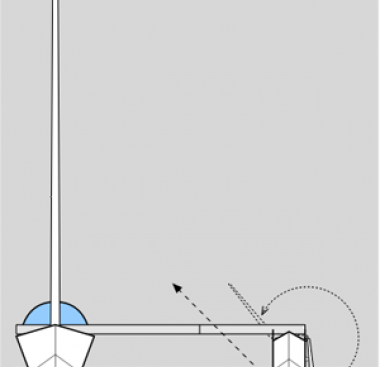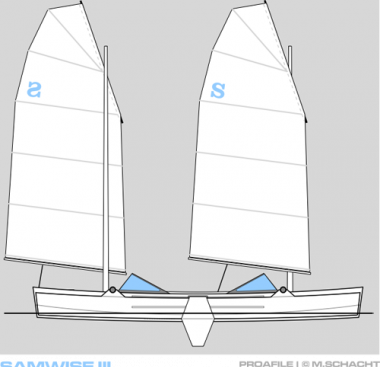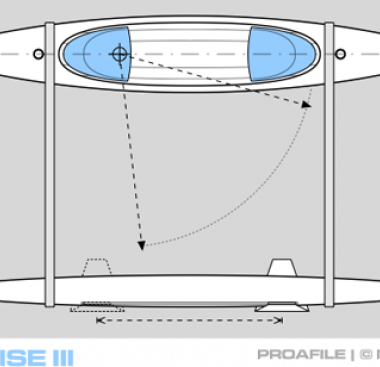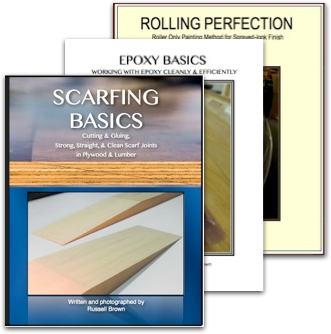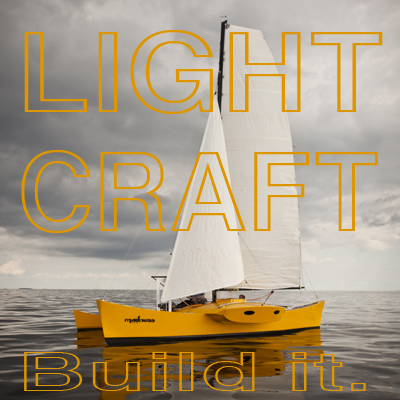Samwise part 3
The third (and hopefully final) iteration of Samwise the micro-cruising proa.
Some fairly dramatic changes since Samwise Part 2 (Part 1 is here). The biggest change is that Sam is now a balls out Atlantic proa - rig placed in the windward hull. No faux Pacific, “weight to windward” sham, an Atlantic proa is Sam I am.
LOA: 20’
BOA: 8’ - 12’
Windward hull beam: 2’-10”
SA: 180 sq. ft.
Mast height: 16’-2”
Rig height: 19’
Placing the rig in the windward hull solves several problems:
1. Aligns CE of sail and leeboard for proper balance. The force resultant of the rig now aligns with the leeboard, solving the weather helm, and making sail steering a much more likely proposition.
2. The windward hull is a larger box section, creating a sturdier base and more bury for the free-standing masts. Freeing the leeward hull of the need to carry the rig means it can be built lower and lighter.
3. Sail handling will be far more manageable with the crew within easy reach. Now I can shake the sail and pop a batten simply by grabbing the boom with my hand. Rigging, reefing and furling can all be done while standing in the cockpit.
Speaking of the rig, the planform is now so close to the theoretically ideal ellipse it could make a Spitfire jealous. Not bad for a standing lug! The sails are still slab reefed (all the way up to the third batten).
Foiled Again
Last week I was perusing some old AYRS papers looking for proa ideas, and they reminded me how cool Bruce foils are. My own tests with Bruce foils were extremely convincing - the models sailed flat, fast and true. So throwing my usual caution to the winds, I’ve drawn Sam with a force balancing hydrofoil. The purpose of the Bruce foil isn’t to lift the hull, but to keep if from submerging - “balancing” the heeling force of the rig. The leeward hull can theoretically be reduced to almost nothing - just enough to support the hydrofoil in transient wind conditions. That may be so, but I’m taking the belt and suspenders approach with Sam - big lee hull. That said, 24 feet now seems like overkill, especially since a nice trailering package is an important goal. So Sam’s leeward hull is 20’ - same as the other. I don’t mind the weight/cost savings either.
To make sure the CE is dead on for all points of sail, the foil is adjustable fore and aft via traveler cars on an 8’ Harken track. I intend some sort of shock chord arrangement (TBD) that allows the foil to slide aft if/when it hits the bottom. The foil completely retracts for beaching and trailering.
The sliding crossbeams adjust beam from 8’ to 12’. Actual sailing beam will vary because the Bruce foil is sensitive to overall beam. Too wide and the foil lifts out (making too much leeway). Too narrow and the foil buries. Beam will also adjust inwards when the sails are reefed. I don’t imagine constant beam adjustment while sailing, simply set the correct beam for the current sail area, and go sailing.
I’ve refined the hull shape a bit. Attractive as the flat-bottom sharpie simplicity is, I’m thinking hull shape is probably not the wisest place to make a huge compromise - the name is SamWISE after all. The five panel hull gives a wider beam at the deck for a more comfortable interior, a narrower waterline, a more rounded section for reduced surface area, and best of all, the surface area and waterline beam will gracefully diminish as the hull unweights in stronger winds.
I’ve drawn Sam without the fully enclosed cabin this time around. Dodgers with vinyl windows fore and aft stop the spray, and overhead canvas would protect against excessive sun or rain. This would put Sam in the popular and rugged “open boat” category. It would also make oars a distinct possibility for auxiliary power. Puget Sound gets more than its share of dead flat calms, and the new hull shape would row pretty well. As the price of oil continues it’s inexorable climb ($111/barrel today!), the swarm of cruising powerboats grows ever thinner. Soon it may be possible to row a small boat through the San Juan islands without the constant accompaniment of droning engines, diesel fumes and boat wakes.
